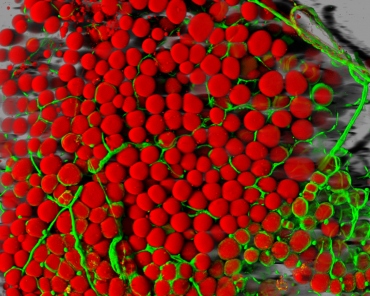
Highlights •Tissue-resident macrophages abound in the mouse and human AV nodes •Connexin 43 connects macrophages with cardiomyocytes •Macrophages modulate the electrical activity of cardiomyocytes •Macrophages assist normal AV nodal conduction
Macrophages have a previously unrecognized role in helping the mammalian heart beat in rhythm. Massachusetts General Hospital researchers discovered that macrophages aggregate around central cardiac cells that regulate electrical impulses within the mouse heart, helping the cells conduct electricity. Mice that were genetically engineered to lack macrophages have irregular heartbeats, hinting that these immune cells may also play a role in heart disease.
“This work opens up a completely new view on electrophysiology; now, we have a new cell ty...
Read More








Recent Comments